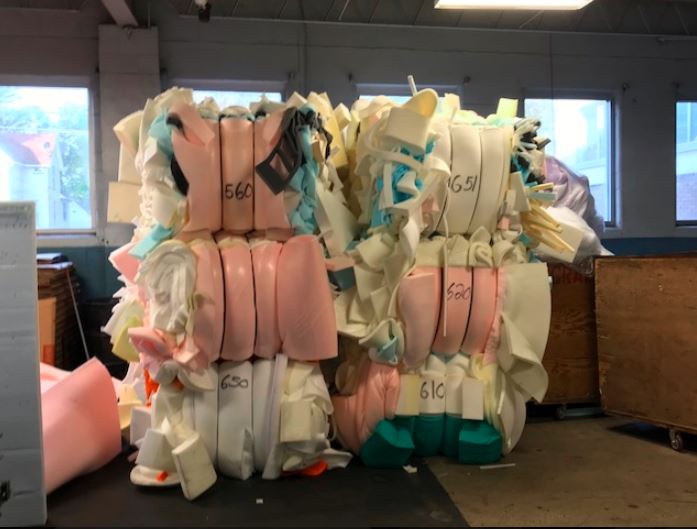“Busted bales” of scrap foam occur when the bales break apart or lose their compacted shape during handling, storage, or transport. This can lead to contamination, loss of material, and inefficiency. Several factors can contribute to busted bales, and understanding these can help in taking preventive measures.
Causes of Busted Bales
1. **Improper Baling Technique**: Incorrect baling techniques, such as insufficient compression or poor tying, can lead to weak bales that easily fall apart.
2. **Weak or Inappropriate Tying Material**: Using weak or inappropriate tying materials (e.g., thin or low-quality wires or straps) can result in bales breaking apart.
3. **Overfilled Bales**: Overfilling bales can put excessive pressure on the tying material, leading to breakage.
4. **Underfilled Bales**: Underfilled bales may not have enough compression to hold together properly.
5. **Inconsistent Material**: Variability in the size, shape, and density of the foam pieces can result in uneven bales that are prone to busting.
6. **Handling and Transport**: Rough handling, dropping, or improper stacking during storage and transport can cause bales to break apart.
7. **Environmental Conditions**: Exposure to moisture, extreme temperatures, or other harsh environmental conditions can weaken the bales and the tying materials.
Reach out to Residue National to purchase your scrap foam products today.
Prevention Measures
1. **Proper Baling Technique**: Ensure that the baling process uses the correct amount of compression and that the bales are evenly filled.
2. **Quality Tying Material**: Use high-quality, appropriate tying materials that can withstand the pressure of the compressed foam. Common materials include strong wire or durable plastic straps.
3. **Consistent Material Input**: Aim for consistency in the size and density of the foam pieces being baled. Pre-shredding the foam can help achieve uniformity.
4. **Correct Bale Size**: Avoid overfilling or underfilling bales. Follow the baler manufacturer’s recommendations for the optimal bale size and weight.
5. **Regular Equipment Maintenance**: Keep baling equipment well-maintained to ensure consistent performance and optimal bale quality.
6. **Careful Handling and Storage**: Handle bales with care during loading, unloading, and transport. Use proper lifting equipment and techniques. Stack bales securely to prevent them from shifting or falling.
7. **Environmental Protection**: Store bales in a dry, sheltered area to protect them from moisture and other environmental factors. Consider using weather-resistant covers if bales must be stored outside.
By addressing these factors, you can significantly reduce the occurrence of busted bales and improve the overall efficiency and quality of your scrap foam handling process.


Leave a Reply